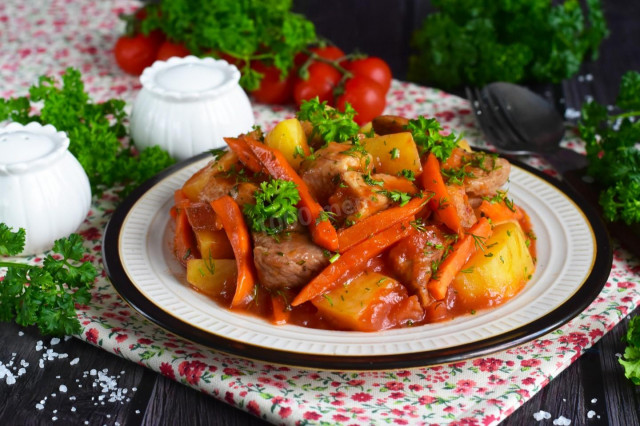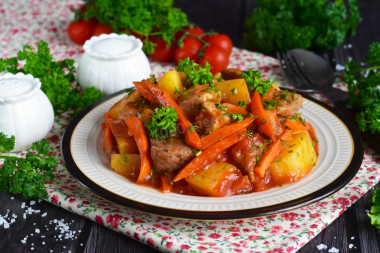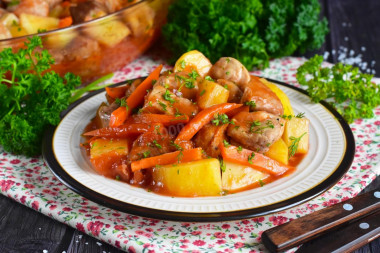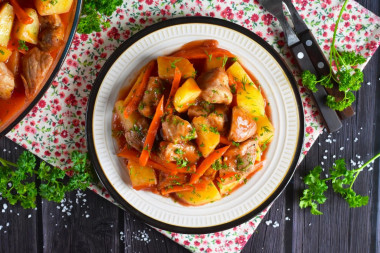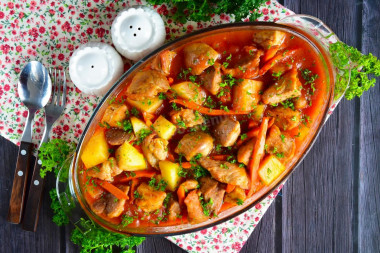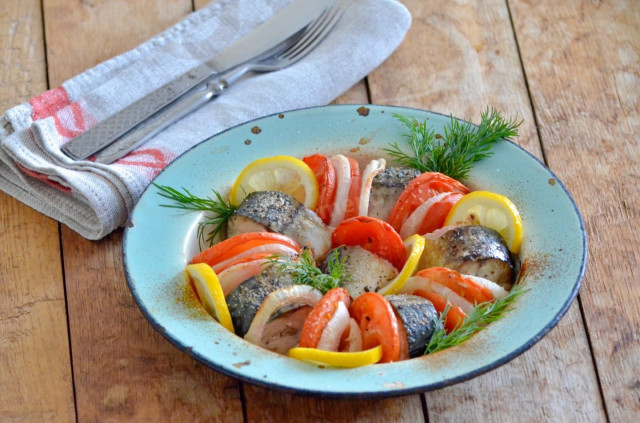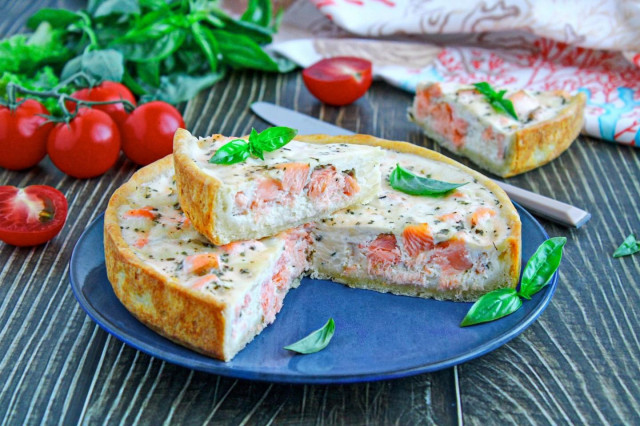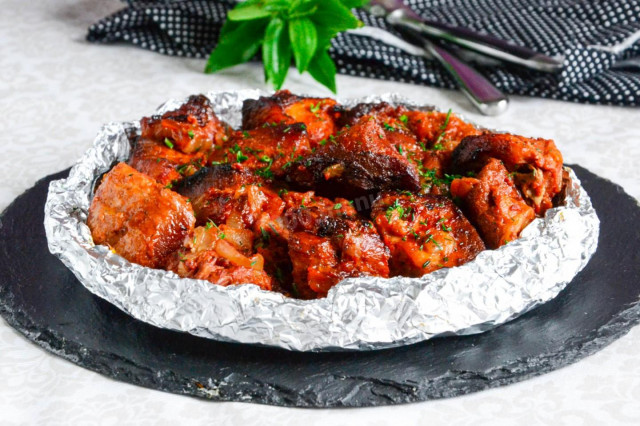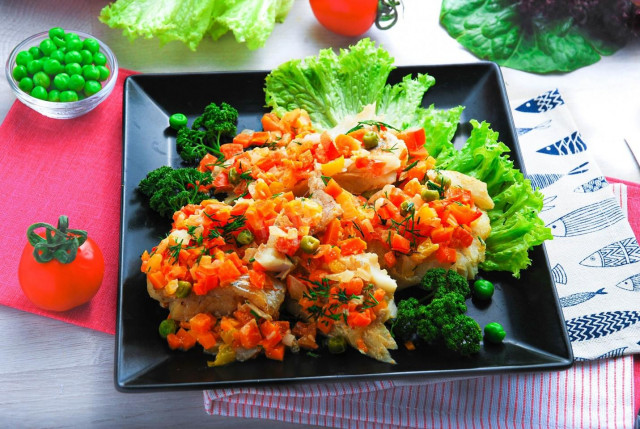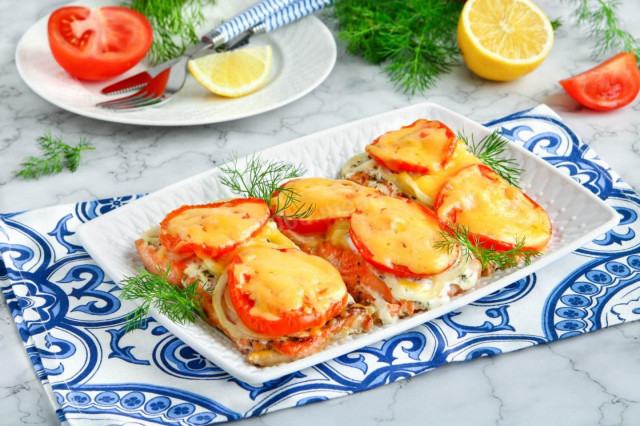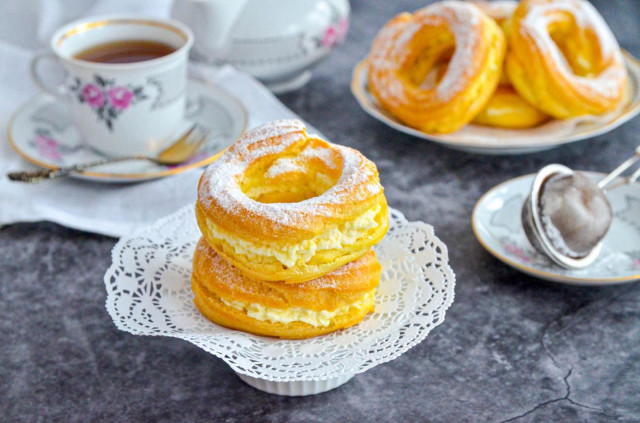Composition / ingredients
Step-by-step cooking
Step 1:
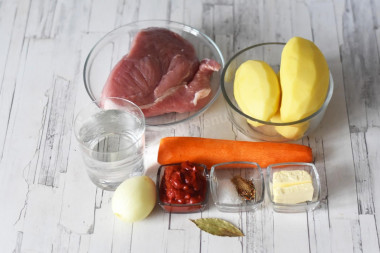
How to make potatoes with meat in a duck house stewed in the oven? Very simple! First, prepare the necessary ingredients according to the list. Pork can be taken from any part of the carcass (ham, tenderloin, carbonade, neck, etc.). I have a ham. The vegetable part can be replaced or supplemented to your liking.
Step 2:
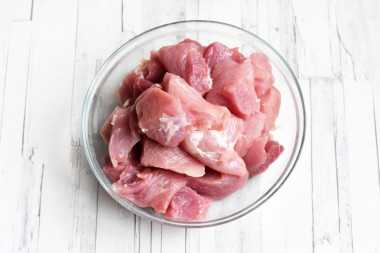
Wash and dry the pork. Cut into cubes with a side of about 3 cm .
Step 3:
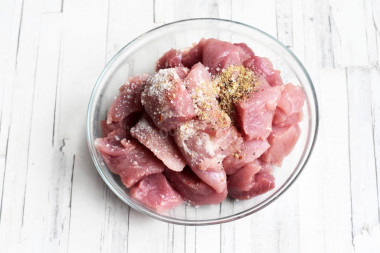
Season the meat with salt, pepper and mix.
Step 4:
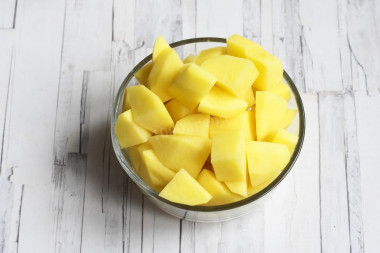
Wash and peel the potatoes. Cut large tubers into medium cubes. Small potatoes can be left whole.
Step 5:
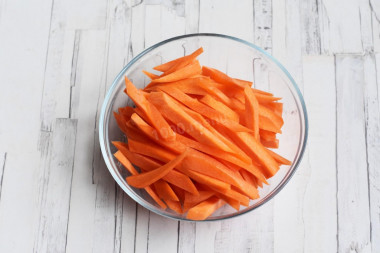
Peel the carrots and cut them into cubes.
Step 6:
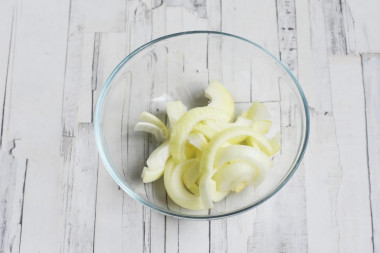
Peel the onion and cut into half rings.
Step 7:
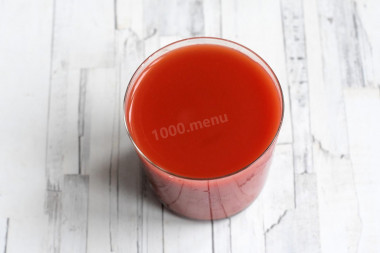
Dilute tomato paste in clean drinking water. Determine the amount of water by the size and depth of your duckling. Only 300 ml got into my duckling bowl, the extra water could simply flow out of the mold when boiling. If you want the sauce to get thick, you can add 1 tsp of starch to it and mix so that there are no lumps.
Step 8:
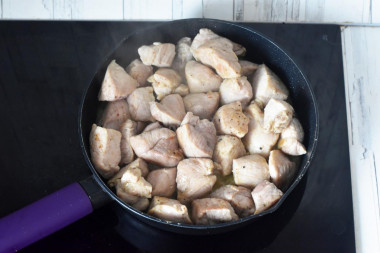
Heat the butter in a frying pan. Lay out the pork and, stirring, fry over high heat until golden brown.
Step 9:
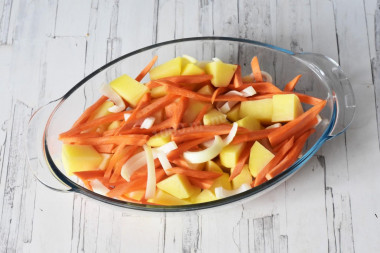
Put the prepared vegetables in the duck house. Additionally, there is no need to lubricate the duckling with anything.
Step 10:
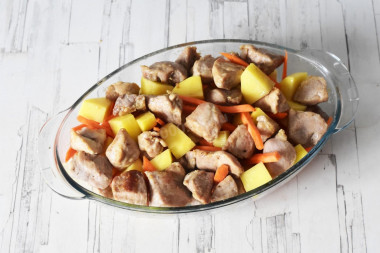
Put pieces of fried pork on top of the vegetables.
Step 11:
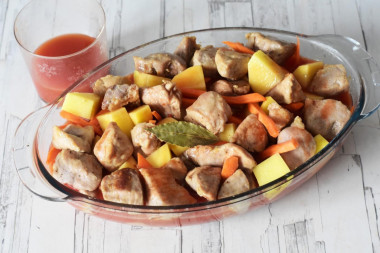
Pour the diluted tomato sauce over the meat and vegetables. Add salt and pepper to taste. Add the bay leaf.
Step 12:
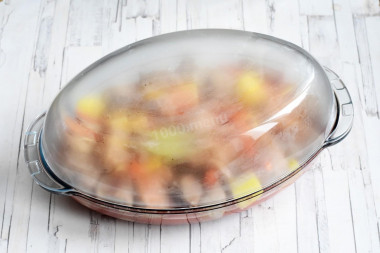
Cover the duck house with a lid and put it in a preheated 180 ° C oven for 1.5 hours. Reduce the temperature to 150 ° C 10-15 minutes before the end of cooking.
Step 13:
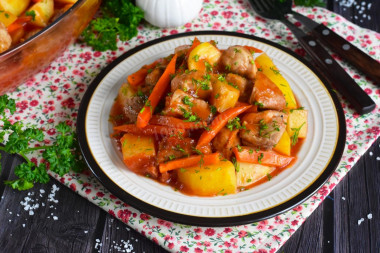
Sprinkle the finished meat with potatoes with fresh herbs and serve to the table. Enjoy your meal!
In addition to pork, any other meat can be used in this dish. Keep in mind that the cooking time, as well as the taste and calorie content of the dish will change. For example, beef is cooked longer than pork, and chicken fillet or turkey is less.
Since the degree of salinity, sweetness, bitterness, sharpness, acid, burning is individual for everyone, always add spices, spices and seasonings, focusing on your taste! If you put some of the seasonings for the first time, then keep in mind that there are spices that it is especially important not to shift (for example, chili pepper).
Keep in mind that everyone's ovens are different. The temperature and cooking time may differ from those specified in the recipe. To make any baked dish successful, use useful information about the features of ovens !
Caloric content of the products possible in the composition of the dish
- Onion - 41 kcal/100g
- Ripe potatoes - 80 kcal/100g
- Baked potatoes - 70 kcal/100g
- Mashed potatoes - 380 kcal/100g
- Boiled potatoes - 82 kcal/100g
- Potatoes in uniform - 74 kcal/100g
- Fried potatoes - 192 kcal/100g
- Pork fat - 333 kcal/100g
- Pork meat - 357 kcal/100g
- Pork - low-fat roast - 184 kcal/100g
- Pork chop on a bone - 537 kcal/100g
- Pork - schnitzel - 352 kcal/100g
- Pork Shoulder - 593 kcal/100g
- Boar's leg - 113 kcal/100g
- Pork - 259 kcal/100g
- Carrots - 33 kcal/100g
- Dried carrots - 275 kcal/100g
- Boiled carrots - 25 kcal/100g
- Bay leaf - 313 kcal/100g
- Ground black pepper - 255 kcal/100g
- Butter 82% - 734 kcal/100g
- Amateur unsalted butter - 709 kcal/100g
- Unsalted peasant butter - 661 kcal/100g
- Peasant salted butter - 652 kcal/100g
- Melted butter - 869 kcal/100g
- Tomato paste - 28 kcal/100g
- Salt - 0 kcal/100g
- Water - 0 kcal/100g

